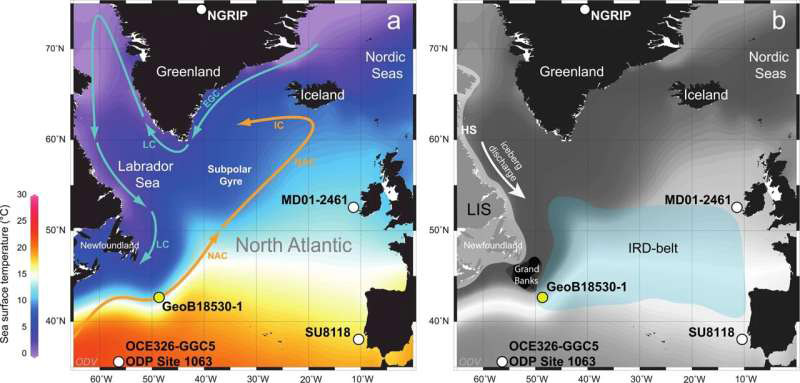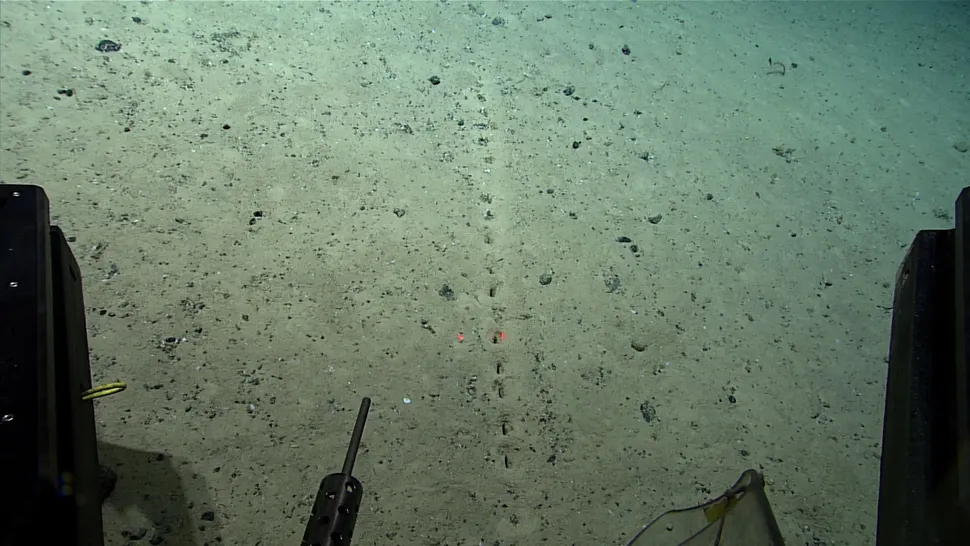OCEANS AND MYSTERY
- Get link
- X
- Other Apps
Strange 'alien' holes discovered on the ocean floor
NOAA has asked the public for suggestions on what they could be?
The holes appear as a closely aligned, regularly repeating pattern. Tiny piles of sediment are piled around them. (Image credit: NOAA)
Explorers have discovered a series of mysterious, "perfectly aligned" holes punched into the seafloor roughly 1.6 miles (2.6 kilometers) beneath the ocean surface, and they have no idea who or what made them.
The strange holes were spotted by the crew of the National Oceanic and Atmospheric Administration's (NOAA) Okeanos Explorer vessel as they investigated the Mid-Atlantic Ridge — a mostly unexplored region of the seafloor that is part of the world's largest mountain range.
The holes form a straight line and appear at regularly repeating distances, and they are surrounded by tiny mounds of sediment. This isn't the first time that holes have been spotted in the area; two marine scientists from the U.S. National Marine Fisheries Service also spotted mysterious hollows in the ocean floor during a dive in 2004.
Related: Sunken cities: Discover real-life 'Atlantis' settlements hidden beneath the waves
"These holes have been previously reported from the region, but their origin remains a mystery," the NOAA researchers wrote on Facebook. "While they look almost human made, the little piles of sediment around the holes make them seem like they were excavated by... something."
In 2004, scientists proposed that an organism living in or sifting through the seafloor's sediment made the holes, but because no one has seen such creatures make them, their exact origins are unknown. Public speculation under the NOAA post's Facebook page ranged widely — from cracks in the floor's surface made by escaping gas, to underwater human craft digging for treasure, to ants, aliens and even starfish doing cartwheels.
The unresolved mystery is reminiscent of an underwater "yellow brick road" to Atlantis that ocean explorers discovered on top of an underwater mountain near Hawaii in May. Scientists explained that discovery — they suspected that heating and cooling of the seafloor across multiple volcanic eruptions created the strange path.
What is creating the holes, on the other hand, may take a little longer to figure out. The researchers will continue to explore the region until September as part of the Voyage to the Ridge 2022 expedition, which aims to map out the region's coral reefs and sponge habitats alongside studying the region's hydrothermal vents and its fracture and rift zones. Maybe if they're lucky, they might just catch the hole-maker in the act.
Originally published on Live Science.
—Deep-sea fish with lightbulb on its head washes up in California
—Bizarre, polka-dotted blob washes ashore in North Carolina
—1 billion sea creatures cooked to death in Pacific Northwest
The Ocean Is Starting to Lose Its Memory, Scientists Warn Science Alert - May 9, 2022

The oceans that surround us are transforming. As our climate changes,
the world's waters are shifting too, with abnormalities evident not only
in the ocean's temperature, but also its structure, currents, and even
its color.
There Are Mountains of Sugar Hidden in The Ocean, And We've Only Just Found Out Science Alert - May 5, 2022
Scientists have discovered that seagrass meadows on the ocean floor can
store huge amounts of the sweet stuff underneath their waving fronds -
and there are major implications for carbon storage and climate change.
Over 5,000 Previously Unknown Viruses Have Been Discovered Lurking in The Oceans
Science Alert - April 8, 2022
An analysis of the genetic material in the ocean has identified
thousands of previously unknown RNA viruses and doubled the number of
phyla, or biological groups, of viruses thought to exist.
Scientists discover mechanism that can cause collapse of great Atlantic circulation system PhysOrg - October 18, 2022

The Atlantic meridional overturning circulation (AMOC), a system of ocean currents that carry warm water from the tropics into the North Atlantic and transport cold water from the northern to the southern hemisphere, is a fundamental mechanism for the regulation of Earth's climate. The conveyor belt has collapsed in the past owing to natural factors. The most recent collapse played a key role in the last deglaciation. AMOC is now threatened by global warming, scientists have shown, and a new study has discovered the sequence of past breakdown events.
*
Scientists
find weird holes on the ocean floor spewing ancient fluids like a fire
hose at the bottom of the ocean off the coast of Oregon Live Science - April 24, 2023
Understanding the movement of fluids in the Cascadia subduction zone can
help researchers pinpoint the risk of earthquakes. Holes spewing warm
fluids from the boundary between tectonic plates have been discovered at
the bottom of the ocean off the coast of Oregon. Researchers think this
strange, never-before-seen phenomenon, dubbed Pythia's Oasis after an
ancient Greek priestess, could provide insight into earthquake risk
along the dangerous fault - although exactly how it affects the
tectonics is unclear. Now, research published Jan. 25 in the journal Science Advances (opens in new tab)
finds that off the coast of Newport, Oregon, on the seafloor 3,412 feet
(1,040 m) below the ocean surface, there is a series of at least four
small vents bubbling fluids from deep within the fault.Image credit: Philip, B., Science Advances, 2023 DOI: 10.1126/sciadv.add6688)
These vents, each of which measures about 2 inches (5 centimeters) across, are about 50 miles (80 kilometers) from the shore. The geochemistry of these fluids reveals that they originate from about 2.5 miles (4 km) deep, near where the plates meet.
The
escape of these fluids could influence how the plates interact, which
could ultimately influence how and when earthquakes occur in the
region.




Comments
Post a Comment
leave a message please